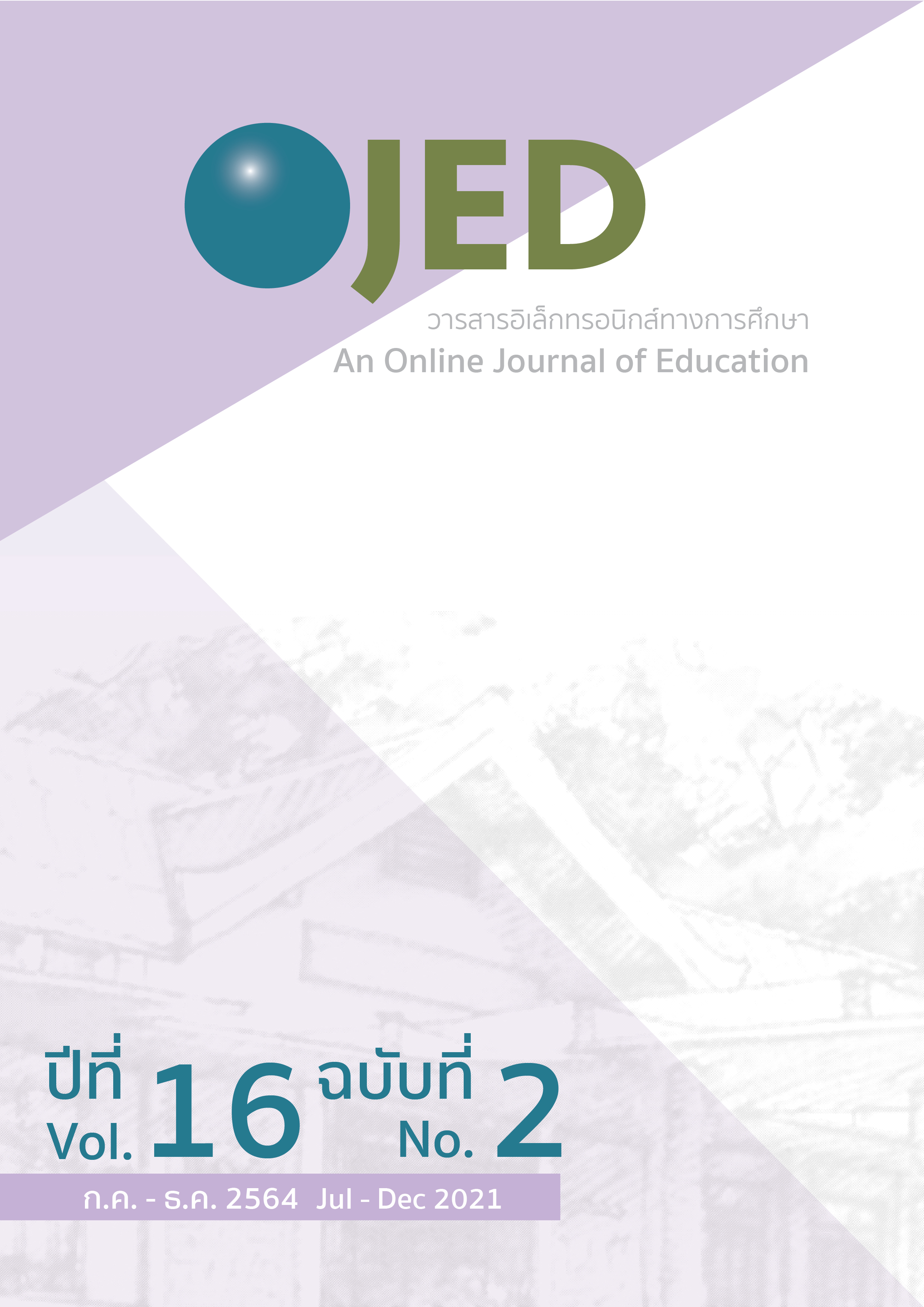Development of Infographic Materials to Enhance Young English as Foreign Language Learners’ Reading Comprehension
DOI:
https://doi.org/10.14456/ojed.2021.23Keywords:
infographic material, reading comprehension, young English as foreign language learnerAbstract
The objectives of this study were to: 1) develop infographic materials to help teach young English as foreign language learners’ reading comprehension skills and 2) examine how effective the developed materials were in increasing young English as foreign language learners’ reading comprehension skills focusing upon non-fiction text. The participants included 20 year-four students and five foreign teachers who were purposefully selected from Prasarnmit Primary International Programme (PPiP). The instruments used were: 1) semi-structured interviews for teachers, 2) need analysis questionnaires for students, 3) English reading comprehension tests, 4) semi-structured interviews for students, and 5) material evaluation forms for teachers. The qualitative data was analysed through content analysis. The quantitative data was analysed by Wilcoxon signed rank test and statistics using percentage, mean, and standard deviation. The results found that (1) the students’ posttest mean scores of the English reading comprehension tests improved at the significant level of 0.5. (2) the results from students’ semi-interview and teachers’ material evaluation showed the satisfaction of both students and teachers toward the implementation of the develop infographic materials.
References
Anderson, L. W., & Bloom, B. S. (2001). A taxonomy for learning, teaching, and assessing: A revision of Bloom's taxonomy of educational objectives: Longman.
Bamford, A. (2003). The visual literacy white paper: Adobe Systems.
Barry, A. M. (1997). Visual intelligence: Perception, image, and manipulation in visual communication: SUNY Press.
Cahyani, M. T., Myartawan, I. P. N. W., & Saputra, I. N. P. H. (2021). THE IMPACT OF INFOGRAPHICS IN AN ONLINE JIGSAW SETTING TOWARDS INDONESIAN EFL LEARNERS’READING COMPREHENSION. Language and Education Journal Undiksha, 4(1), 59-64.
Chawwang, N. (2008). An investigation of English reading problems of Thai 12th-grade students in Nakhonratchasima educational regions 1, 2, 3, and 7. Unpublished master’s thesis, Graduate School, Srinakharinwirot University.
Compton, D. L., Appleton, A. C., & Hosp, M. K. (2004). Exploring the relationship between text‐leveling systems and reading accuracy and fluency in second‐grade students who are average and poor decoders. Learning Disabilities Research & Practice, 19(3), 176-184.
Education, D. f. (2013). The national curriculum in England: Framework document. In: Department for Education London.
Grabe, W. (2009). Reading in a second language: Moving from theory to practice: Ernst Klett Sprachen.
Grabe, W., & Stoller, F. L. (2019). Teaching and researching reading: Routledge.
Iwahori, Y. (2008). Developing reading fluency: A study of extensive reading in EFL. Reading in a Foreign language, 20(1), 70-91.
Jewitt, C., & Oyama, R. (2001). Visual meaning: A social semiotic approach. Handbook of visual analysis, 134, 156.
Kongwat, A., & Sukavatee, P. (2019). The Effects of Collaborative Reading Instruction Using Infographics on Student’s Reading Comprehension. An Online Journal of Education, 14(2), OJED1402010 (1402012 pages)-OJED1402010 (1402012 pages).
Krauss, J. (2012). Infographics: More than words can say. Learning & leading with Technology, 39(5), 10-14.
López Cupita, L. A., & Puerta Franco, L. M. (2019). The Use of Infographics to Enhance Reading Comprehension Skills among Learners. Colombian Applied Linguistics Journal, 21(2), 230-242.
Masuhara, H., & Tomlinson, B. (2008). Materials for general English. English language learning materials: A critical review, 17-37.
Nunan, D. (2003). Practical english. Language Teaching. New York: Mc Graw Hill.
Paivio, A., & Clark, J. (2006). Dual coding theory and education. Pathways to literacy achievement for high poverty children, 1-20.
Paivio, A., & Desrochers, A. (1979). Effects of an imagery mnemonic on second language recall and comprehension. Canadian Journal of Psychology/Revue canadienne de psychologie, 33(1), 17.
Peregoy, S. F., & Boyle, O. F. (2000). English learners reading English: What we know, what we need to know. Theory into practice, 39(4), 237-247.
Sisson, D., & Sisson, B. (2014). Close reading in elementary school: Bringing readers and texts together: Routledge.
Sweet, A. P., & Snow, C. E. (2003). Rethinking reading comprehension: Guilford Press.
Tomlinson, B. (2011). Materials development in language teaching: Ernst Klett Sprachen.
Van Den Broek, P., Kendeou, P., Kremer, K., Lynch, J., Butler, J., White, M. J., & Lorch, E. P. (2005). Assessment of comprehension abilities in young children. Children’s reading comprehension and assessment, 107-130.
Wertz, J., & Saine, P. (2014). Using digital technology to complement close reading of complex texts. New England Reading Association Journal, 50(1), 78.
Downloads
Published
How to Cite
Issue
Section
License
Copyright (c) 2021 An Online Journal of Education

This work is licensed under a Creative Commons Attribution-NonCommercial-NoDerivatives 4.0 International License.




